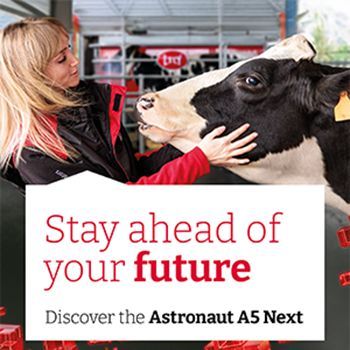The Russian Dairy Industry After 10 Years of Food Embargo

The overall volume of dairy product imports has decreased by 32.1%, with supplies from third countries almost entirely replaced by imports from Belarus. Self-sufficiency in dairy products has increased from 77% to 87%.
Growth in Dairy Production
Cheese production has increased by 132%, cream by 205%, whole milk powder by 221.8%, and skimmed milk powder by 104.2%.
Increased Demand for Quality Raw Materials
The growing production has ensured demand for quality raw materials: the output of marketable milk in the organized sector has increased by 49.5%, reaching nearly 20 million tons. The dairy productivity of cows in agricultural enterprises has increased by 81% to 8,165 kg per head per year.
Continuous Growth in Raw Milk Production
According to Georgy Zhitmarev, commercial director of the Piskarevsky Dairy Plant, the production of raw milk has been growing throughout the period of the food embargo. "Today, all raw milk is in demand, and prices are rising. Milk production is on the rise," he said, noting that the reconstruction of old farms and the construction of new ones are underway.
State Support and Investment
According to Soyuzmoloko, over the past ten years, the production of raw milk in Russia has increased by 13.2%, amounting to 33.8 million tons in 2023 compared to 29.9 million tons in 2013. Marketable milk production has increased by 38.3% to 25.8 million tons, with 19.4 million tons produced in agricultural enterprises (a growth of 49.5%). The dairy productivity of cows in agricultural enterprises has grown by 81% to 8,165 kg per head per year.
From 2013 to 2023, the government allocated more than 380 billion rubles to support both the raw materials and processing sectors.
Rising Demand for Dairy Products
Support for production is also provided by the growing demand for dairy products. Over the past 10 years, cheese consumption has increased by 42%, butter by 32%, ice cream by 35%, drinking milk by 6%, cottage cheese by 8%, and sour cream by 10%.
Impact on the Cheese-Making Industry
The food embargo had the most significant impact on the cheese-making industry. According to Vasily Redin, sales director of milk and livestock at Trio Group, over the past ten years, more than 100 billion rubles, or 20% of all investments in milk processing, have been invested in this sub-sector. He believes that in the next five to six years, the industry will continue to increase production volumes and produce new products, primarily for the domestic market and for export.
According to Soyuzmoloko, cheese production in Russia from 2013 to 2023 increased 2.3 times, reaching 801,000 tons by the end of 2023. The production of cheese products increased 2.1 times to 193,000 tons during this period.
Local Production and Export
Yevgeny Grebnev, general director of the Karat plant, considers local production of processed cheeses since 2014 to be one of the industry's achievements. This category of cheese is now exported to CIS countries and beyond. According to Soyuzmoloko, the total volume of cheese exports from Russia in 2023 was 25,000 tons, 53.7% higher than in 2013.
"We are not competitors to the expensive imported dairy and fermented milk products that were banned from being imported into the Russian Federation ten years ago. However, we successfully supply the market with high-quality products," said Yelena Yashaeva, CEO of the Agrivolga agricultural holding. According to her, the holding produces products for mass consumers in the premium natural segment and the organic segment.
First Import Substitution Project
The first import substitution project after the embargo in 2014 was implemented by Nevamilk Group. This was the production of Feta cheese "Sirtaki" at the Severnoe Moloko plant in the Vologda region, owned by the company.
"Today, 'Sirtaki' is one of the leading white cheeses in Russia, sold in more than 80 regions," said Mikhail Malygin, vice president for strategy and investment at Nevamilk Group. In 2023, the company also launched a plant in the Kursk region after reconstruction to produce semi-hard and hard cheeses, including the unique hard cheese "Alpenberg," which has no analogs in Russia.
Expansion of Production by EkoNiva
Alexey Maslennikov, deputy general director of EkoNiva Food Products, said that since 2013, the holding has increased production hundreds of times, launched processing, and significantly expanded the range, which at that time consisted only of pasteurized milk and sour cream. According to him, in the cheese sector, the company decided not to replace the well-known market mozzarella and parmesan but to offer new products to develop their consumption culture and promote Russian cheeses abroad.
As a result, only in 2023, EkoNiva increased cheese production 7 times to 8,300 tons (compared to 1,200 tons in 2022), and the overall production of dairy products by 70% to 279,500 tons.
Other Projects and Modernizations
Over the past ten years, several other projects for the construction of new and modernization of existing cheese production facilities have been implemented in Russia. For example, in 2018, the Uglich cheese and dairy plant was acquired at auction by the Agrivolga holding. That same year, a major modernization began at the plant, which was completed in 2020.
Viola's Localization Efforts
In the epicenter of food market changes due to the imposed restrictions was the company Viola. "Before the restrictions were introduced, we were the exclusive distributor of the Finnish company's products in Russia - 90% of the company's assortment was produced in Finland," recalled Jana Pestovskaya, head of the procurement department of Viola LLC. According to her, the company's plant in the Moscow region at that time largely worked with imported raw materials and packaging. About 80% of direct purchases in monetary terms were imported supplies.
These events led to an increase in localization rates, which continue to this day. In 2022, the share of imported purchases in the company's overall portfolio decreased to 30-40%, and in 2024 it is about 7%, with the majority of supplies coming from Asian countries and friendly states.
Future Prospects
The Russian dairy industry is now shifting its development vector from import substitution to realizing export potential. Russian producers are actively working on entering the markets of East and Southeast Asia, Africa, and the Middle East. Dairy exports exceed 1 million tons, with 15-20% going beyond the CIS.














